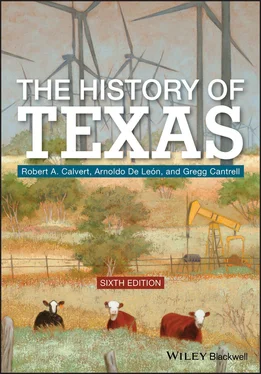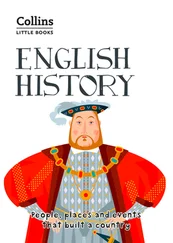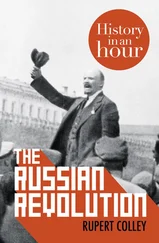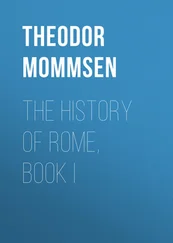The status of Hispanic women reflected both liberties and restrictions. Women sued for military survivors’ benefits and engaged in the sale of lands, from which some achieved financial standing equal to or surpassing that of some men. But women also suffered from serious disadvantages. Law and tradition barred them from voting or the holding of political office. Religion discouraged divorce, dooming many women to endure unhappy marriages. Furthermore, societal conventions at the time demanded the ostracism of adulteresses, while turning a blind eye to the philandering of men. As was common practice in other western societies at the time, women often ate their home‐cooked meals apart from (and sometimes only after) their spouses.
As in the Anglo sector, education was an area of concern for the Hispanic community, and in the traditional Mexican way, Tejanos supported it locally through fundraising drives. In Laredo, citizens opened a school in 1825. In Nacogdoches, Mexicans began a determined drive in 1828 to establish a similar facility, and by 1831, they had a school building and a teacher. San Antonio had two teachers in the late 1820s and early 1830s, though education there seems to have had its ups and downs according to prevailing economic conditions. Béxar and Nacogdoches boasted the highest proportion of students per capita in Texas. Generally, education declined with the turmoil of the mid‐1830s.
Militia units remained the primary form of defense, as had been common during the period before 1821. Different from the Anglo volunteer companies, which were basically retaliatory, the Tejano militia, led by locally elected officers, followed an offensive strategy that conducted forays into Indian camping grounds. By the early 1830s, militia squadrons had developed into highly efficient, ranging cavalry units with the capacity to strike and pursue the enemy. Leaders of these companies included Martín de León, Juan N. Seguín, and Carlos de la Garza.
Catholicism remained the primary religion among the Mexican Texans. As during the Spanish era, Tejanos carried on the practices of their colonial forefathers. The Church had all but given up its work in the Far North during the period, and the two priests responsible for Texas Catholicism during the period had earned disgraceful reputations. Displaying their own independence from religious dictates, Tejanos pleaded poverty and refused to pay the fees that the clergymen requested for performing the sacraments and other priestly functions.
The Indian peoples of Texas, still seeking to maintain their independence, now contended with Tejano militias and Anglo rifle companies instead of Spanish priests and royal armies. Those tribes that the Spanish had targeted for conversion had by the 1820s, either perished due to wars and (European) diseases, been displaced from their native lands and driven into the western regions, or integrated successfully into Spanish/Mexican communities. Only vestiges of the tribal Coahuiltecans remained by the 1830s, some of them having managed to meld into Goliad’s population following the last phase of mission secularization in the 1820s.
With the Nuestra Señora del Rosario Mission no longer operative, the Karankawas lost one of their last sources of refuge near their old hunting grounds; at the same time, they became the targets of Anglos who coveted Karankawan lands. In 1824, settlers from Austin’s colony launched hostilities to drive nearby Karankawas from the vicinity. By 1827, the antagonistic whites had succeeded in forcing the tribe to relocate farther south along the coast. The move, however, only produced new problems for the Indians, as it placed them closer to the Tejano settlements at La Bahía, where local rancheros tolerated no threats to their livestock. During the 1830s, the Karankawas numbered less than 800 persons but desperately clung to survival by preying on Tejano‐owned cattle or, in the case of those who gradually drifted back to their previous homeland, “hiring out” to Anglo settlers as casual laborers or domestic servants.
Meanwhile, the Indian tribes of the plains–such as the Comanches, Apaches, and Norteños–remained faithful to their traditional lifeways. Norteños and Apaches still relied on a combination of the hunt and small‐scale farming, with women cultivating and harvesting corn, pumpkins, and beans. As to the Comanches, warriors continued to sabotage settlements in an effort to halt the encroachment on their land. Developing new entrepreneurial skills, some Plains bands traded with unscrupulous Anglo Americans in the United States, exchanging horses, mules, and other property they had stolen from the Texas settlements for desired American‐made weapons. The Comanches, for their part, continued to rely on the old dependable custom of extorting gifts from the Mexican government in exchange for peace. But with national leaders unable to raise money for tribute, the Comanches–making use of Texas as a virtual stockroom–by the mid‐1830s had arrested farm and ranch development in a line extending from San Antonio to Goliad.
The Caddos of East Texas, who had long lived in farming communities, now contended with problems that threatened to unravel their civilization. Alcohol, provided them by American traders, enfeebled many tribespeople almost at the same time that outsiders began penetrating long‐held Caddo territory. Interlopers included other Native American peoples from the US South as well as Anglo empresarios bearing contracts to establish colonies in Caddo land. By the late 1820s, the Caddos numbered no more than 300 families; they attempted to survive by farming but also by trading beaver, deer, and otter pelts for weapons and household and other personal items in Louisiana.
The cultural diversity of Indian society was enhanced in 1819–20 when a band of Cherokees, bowing to legal and extralegal pressure by Anglos to abandon their homelands in Georgia and Alabama, arrived in northeastern Texas near Caddo land. Other southern tribes, including Kickapoos, Shawnees, Delawares, and Alabama‐Coushattas, also emigrated to East Texas. The Cherokee leader Duwali (known also as Chief Bowles) originally located the Cherokees on the Trinity River, in the proximity of present‐day Dallas. Friction with the Plains Indians soon forced the Cherokees to relocate in today’s Van Zandt, Cherokee, and neighboring counties. During the late 1820s, the Cherokee settlement in Texas included about eighty families that made their living from a combination of farming, livestock raising, and trade with nearby Nacogdoches. From the time of their arrival until the mid‐1830s, Duwali and his people actively sought to acquire legal title to their new homeland from the Mexican government, but they never received anything more than vague promises.
The Centralists Back in Power, 1834–1836
Santa Anna returned from retirement in May 1834 to remove Gómez Farías, his acting president, whose liberalism had thoroughly alienated the Church and the established military. Resurfacing as a reactionary, Santa Anna abolished the Federalist Constitution of 1824 and held elections for a new congress composed of conservatives: that is, Centralists and others supportive of the powers of the military and the Catholic Church. In October 1835, the new congress took steps to create a Centralist state in Mexico. It dissolved all state legislatures and turned the former states into military departments, over which presidential appointees would now govern.
The dissolution of federalism produced revolts in several states. Zacatecas opposed the new order most resolutely, but Santa Anna crushed an uprising there unmercifully. The people in Yucatán broke with the government at this time, managing to retain their separatism until 1846. Meanwhile, in Monclova (which had become the capital of Coahuila y Tejas in 1833), liberal politicians denounced Santa Anna’s new government in the summer of 1834. The legislature refused to obey Centralist orders and in March and April of 1835, it passed two laws designed to raise money for resisting the Centralists. The decrees authorized the governor to sell up to 400 leagues of public land in order to meet the “public exigencies” that the state then faced with Santa Anna, and they designated another 400 leagues with which to compensate militiamen willing to take up arms against hostile Indians.
Читать дальше










